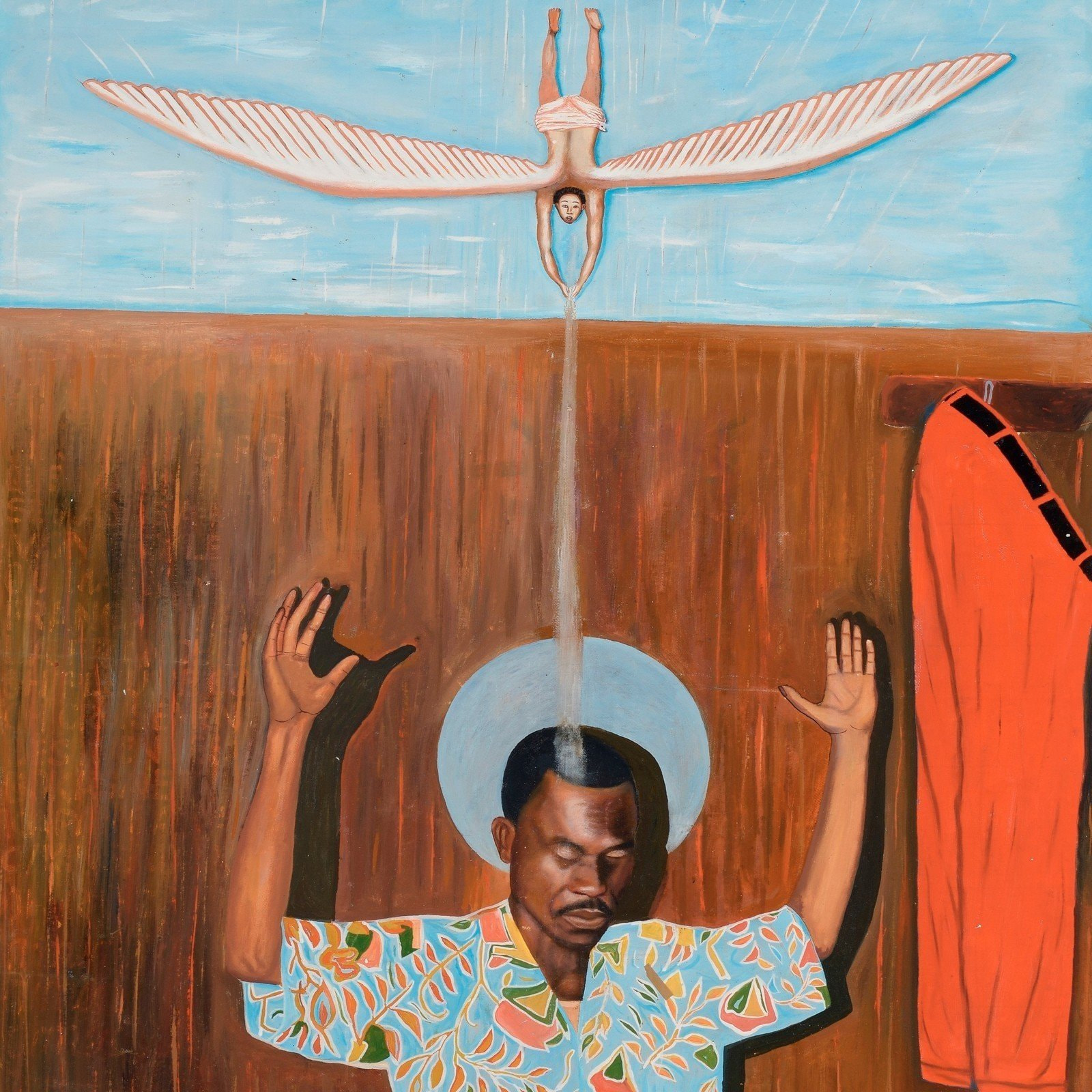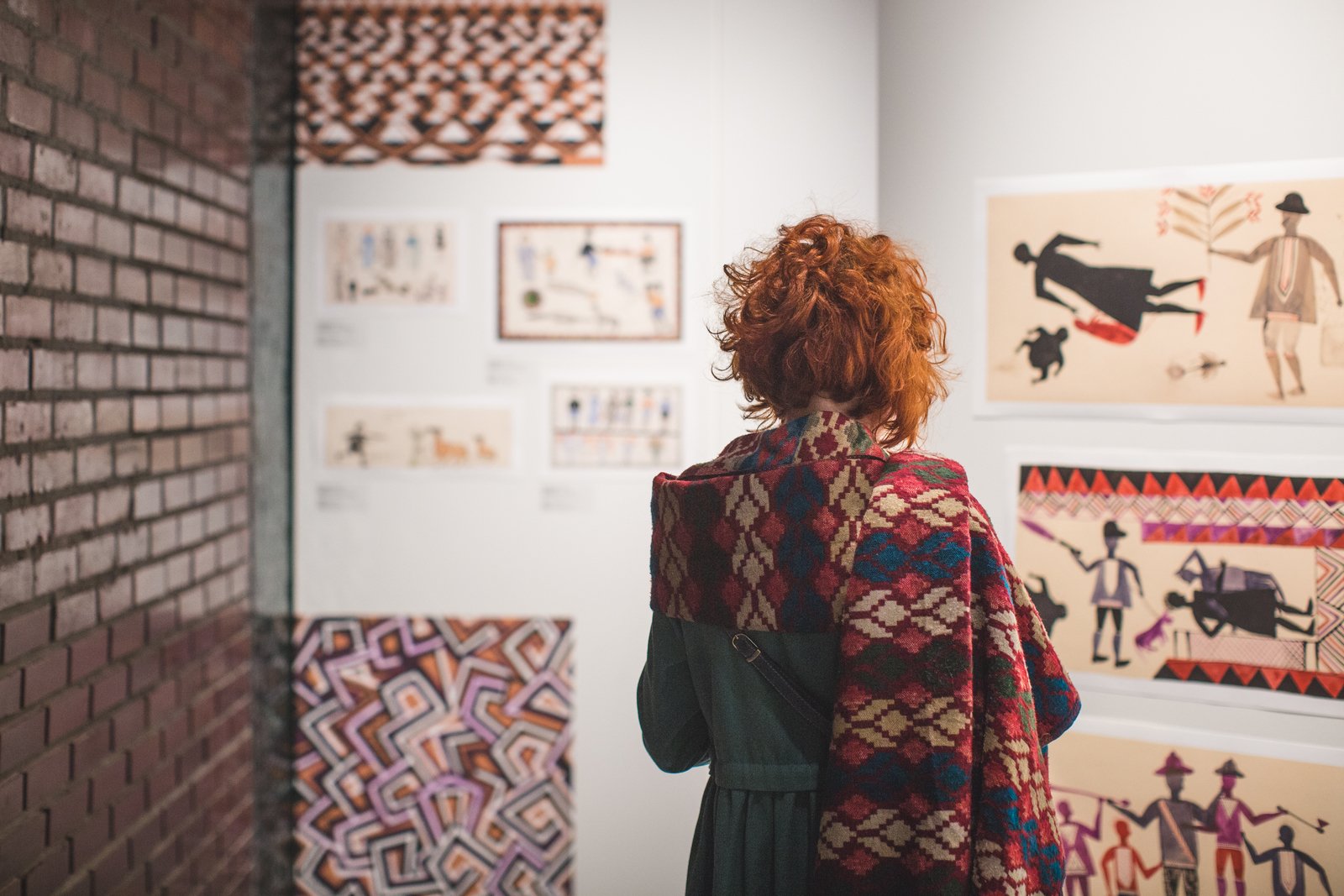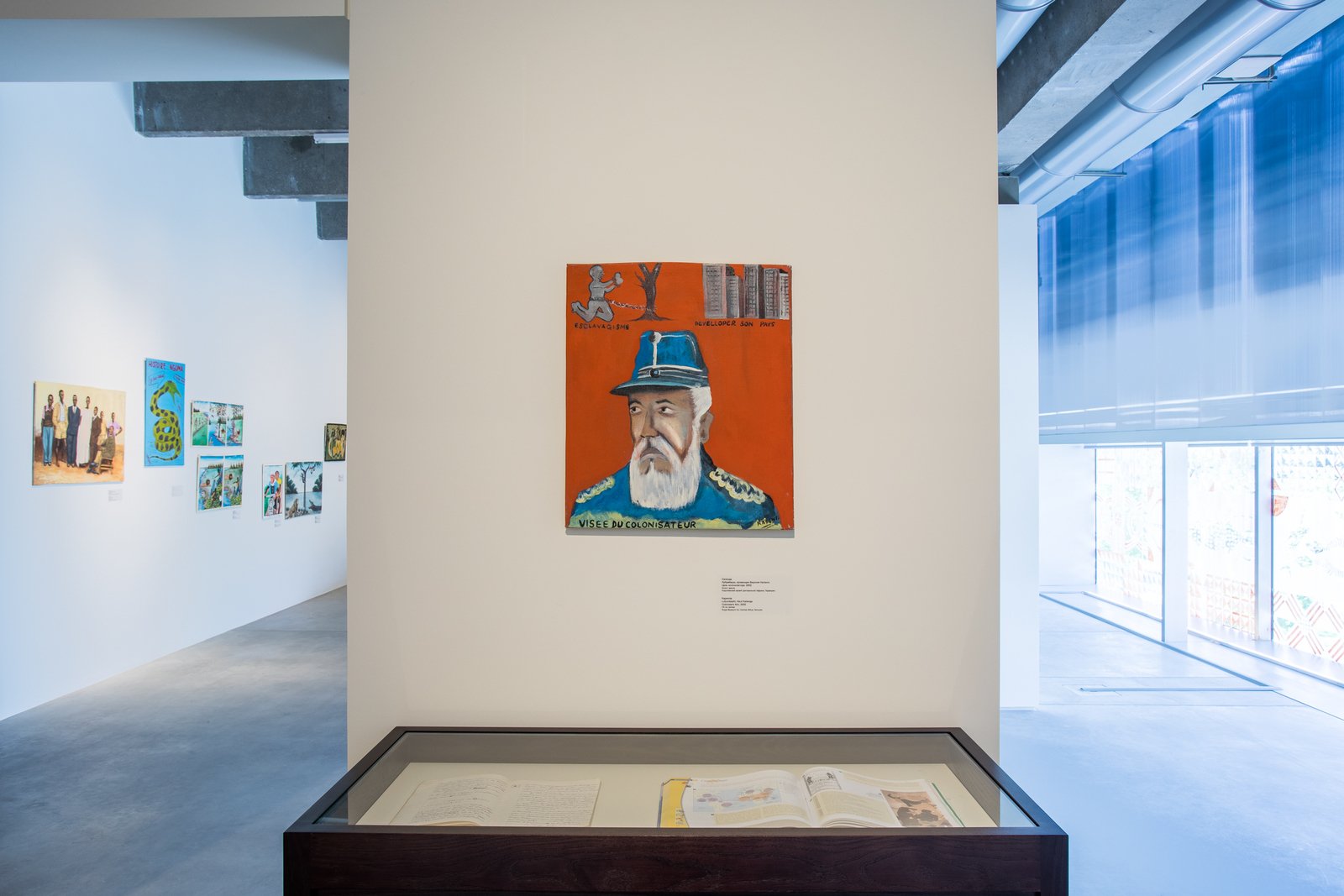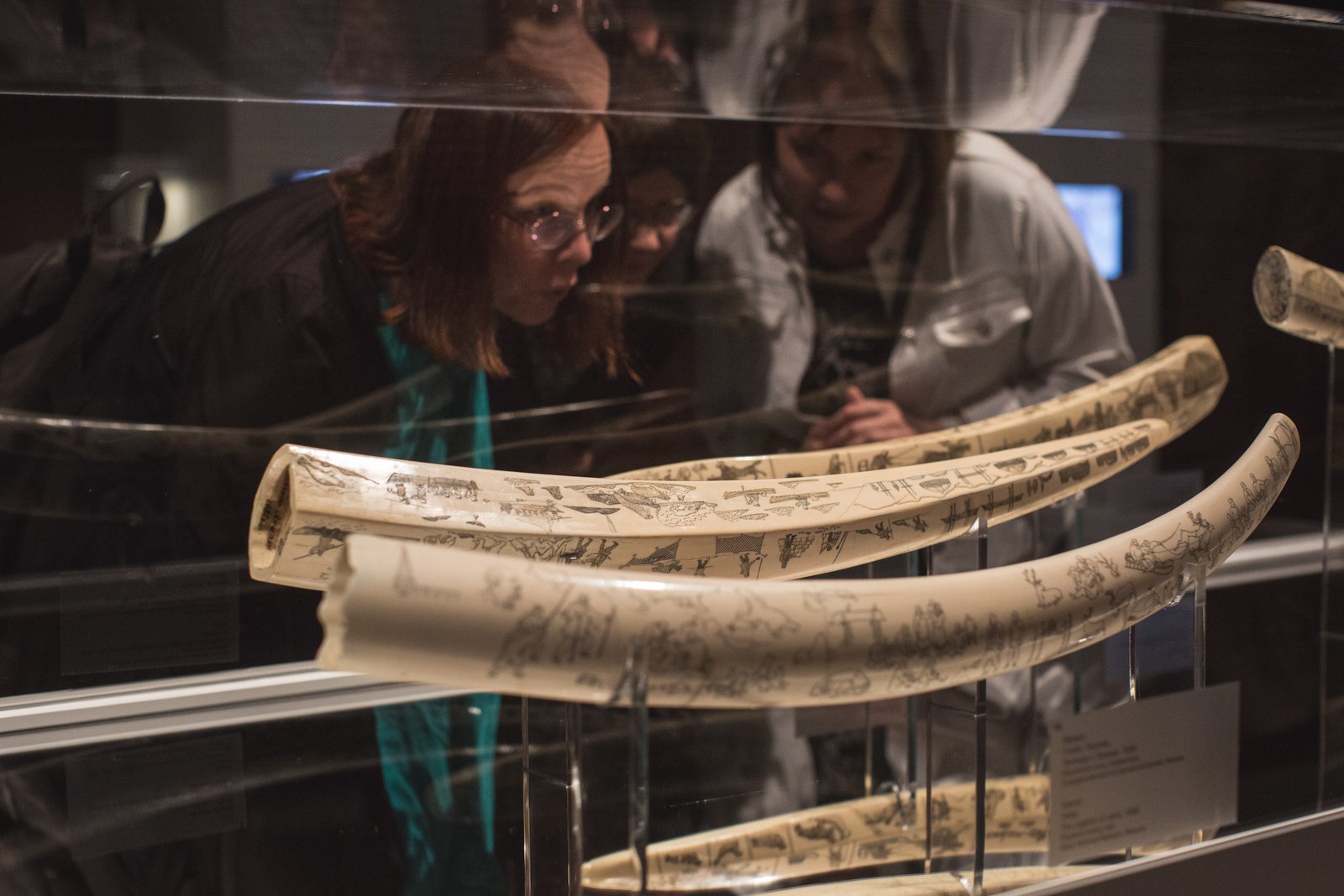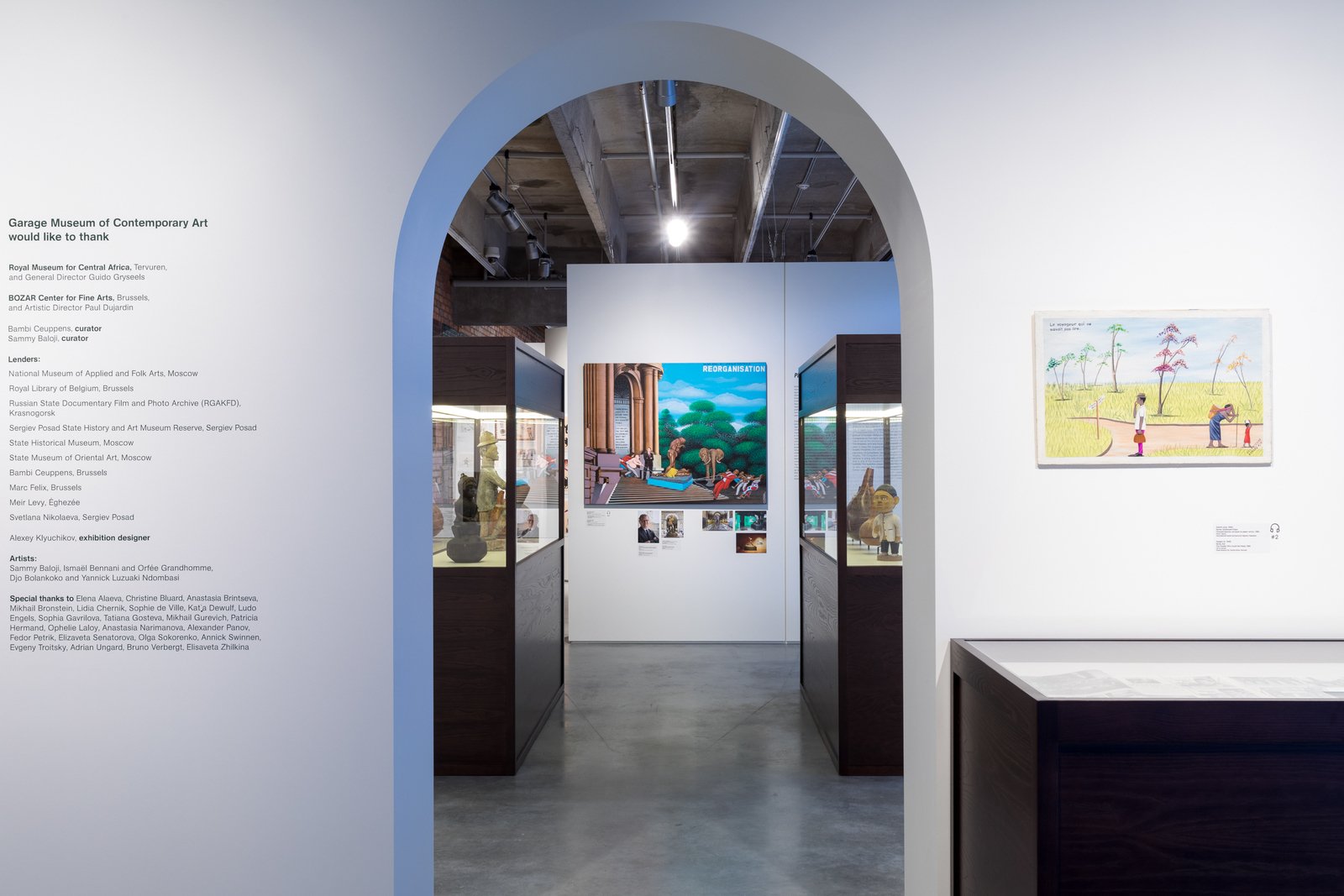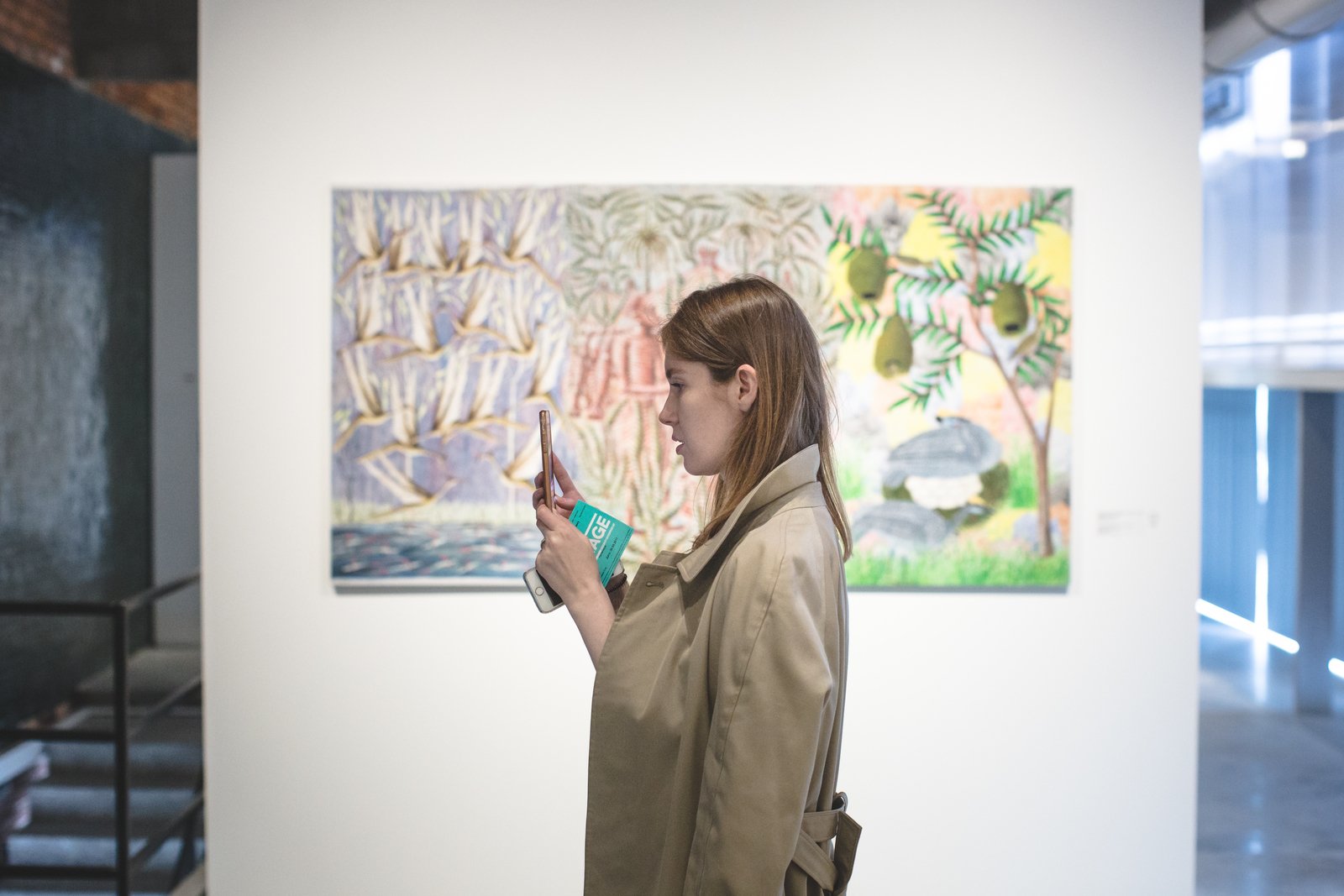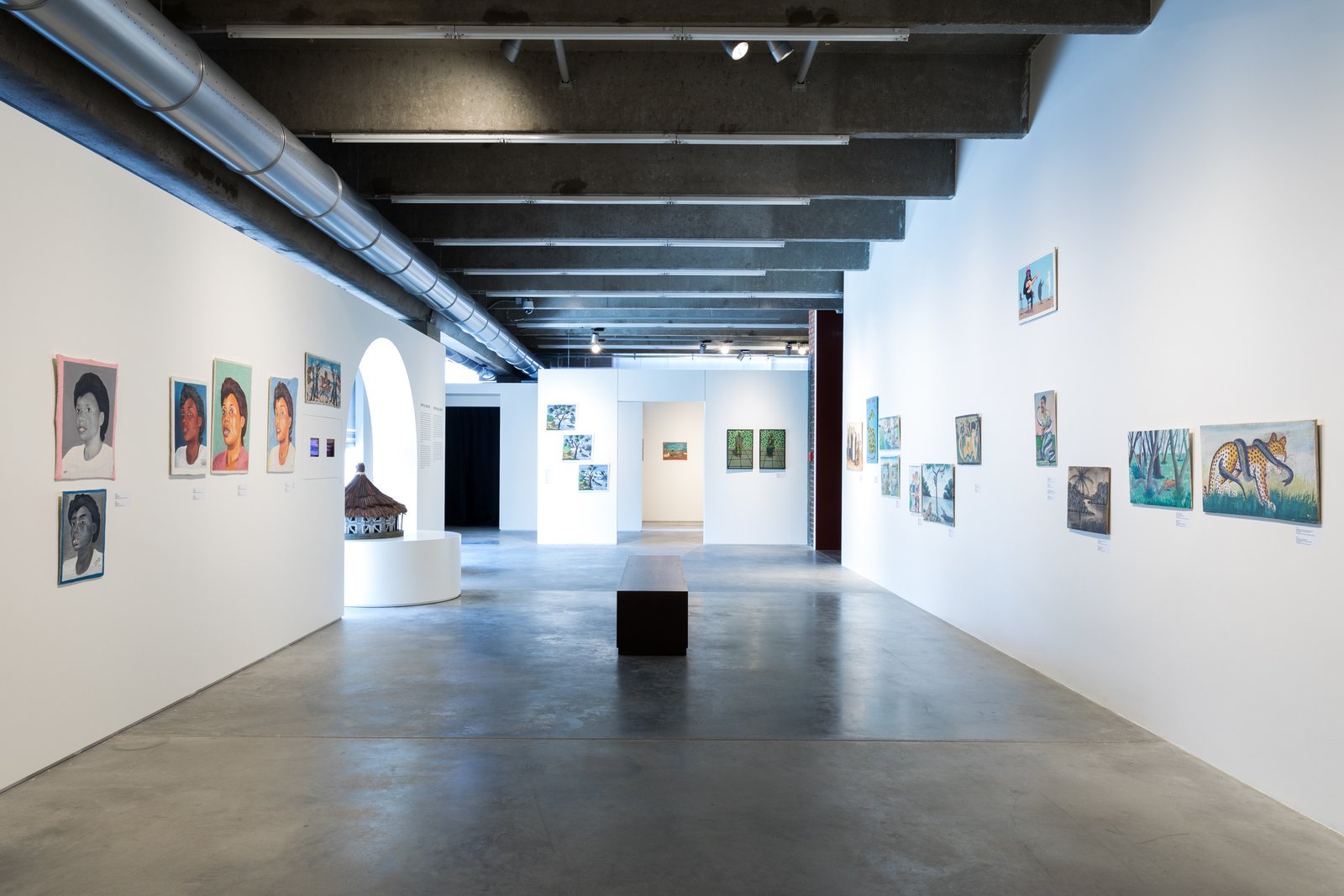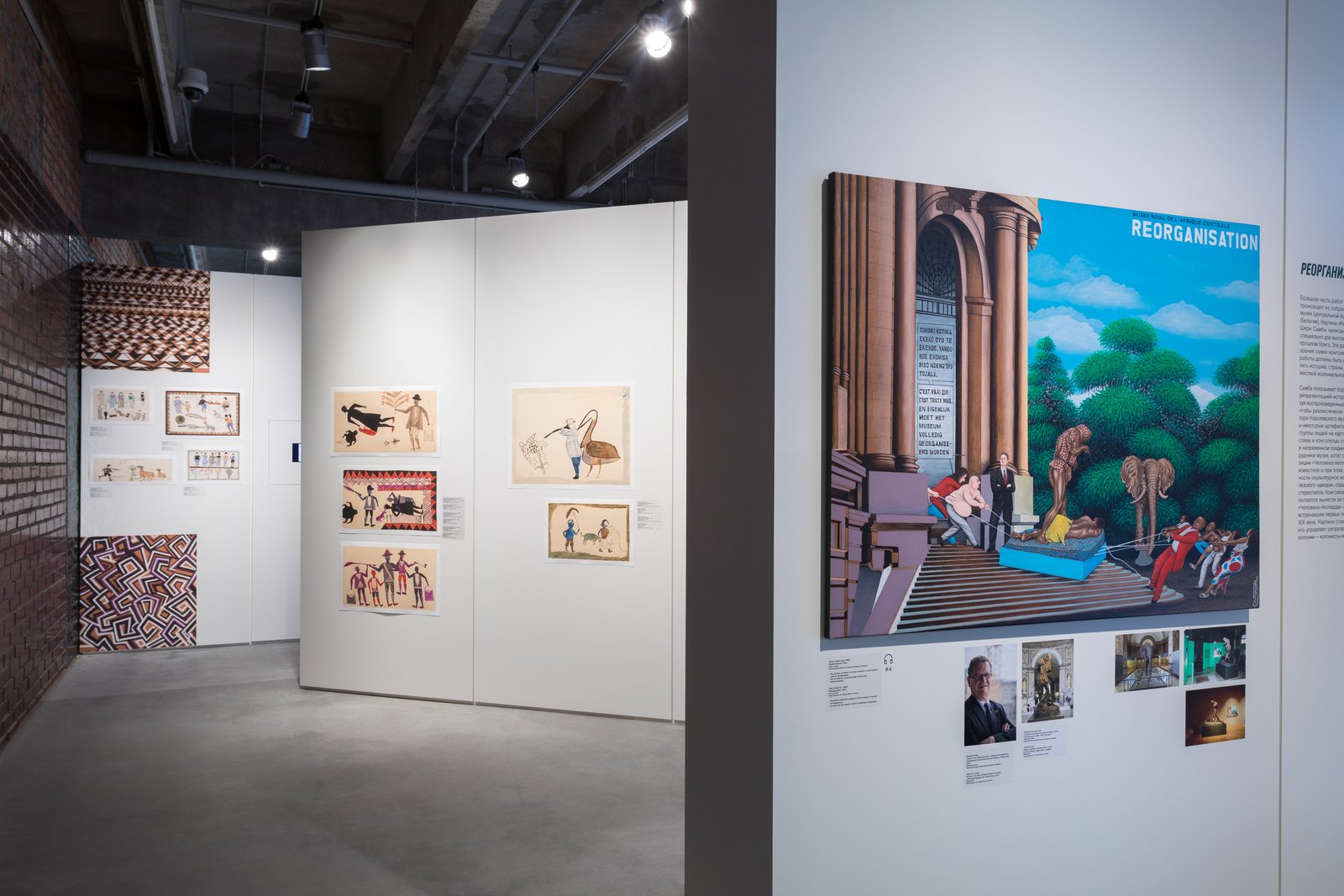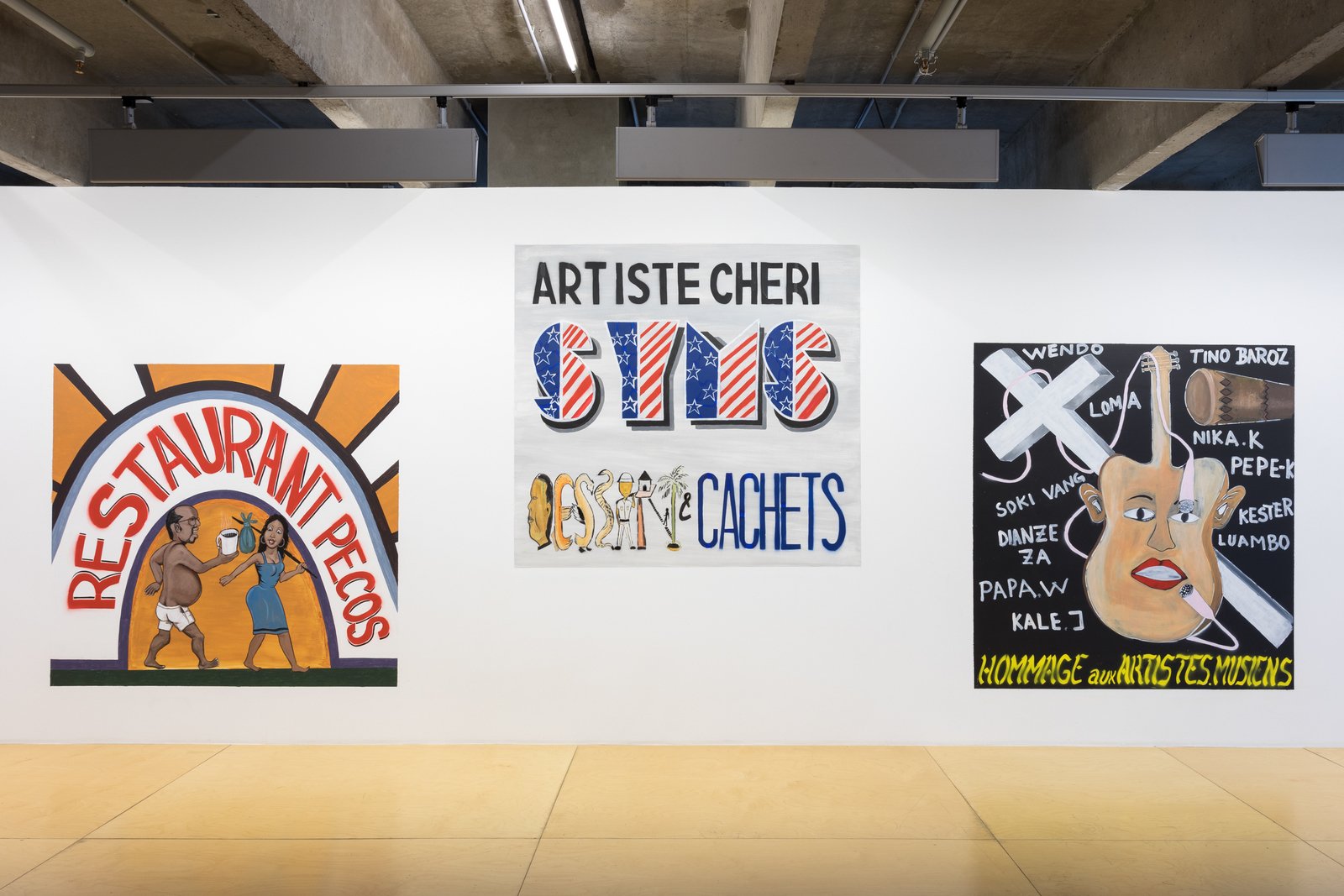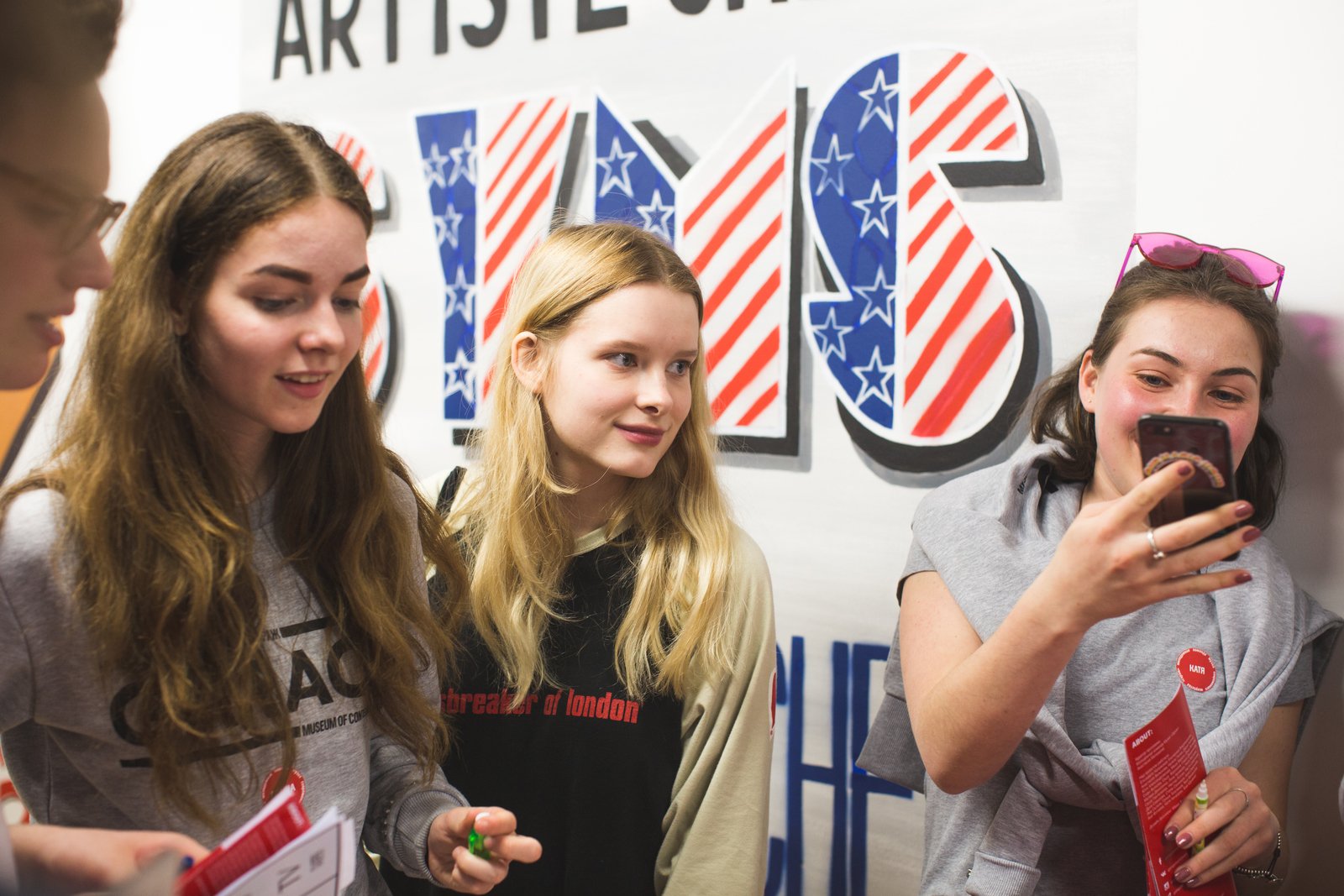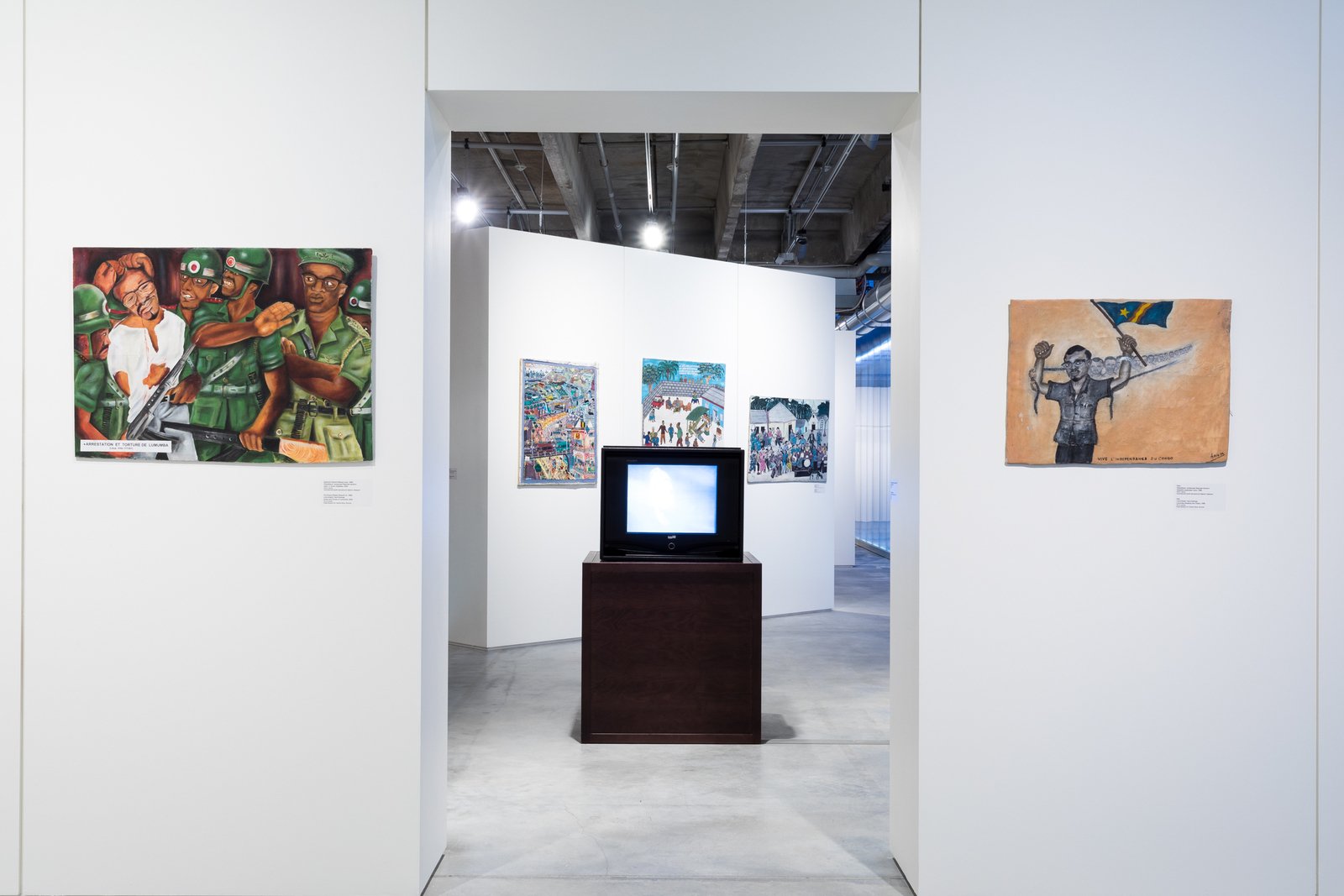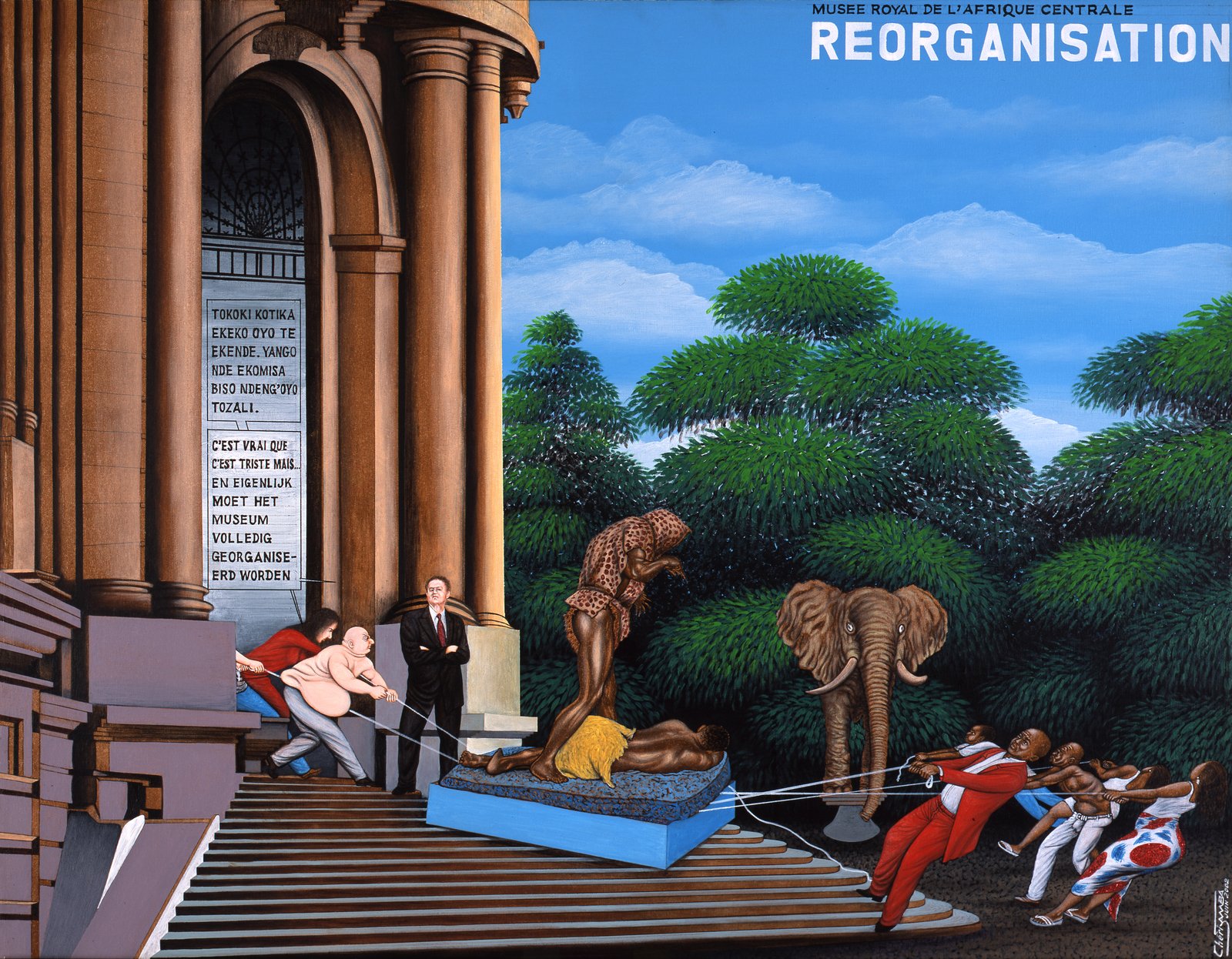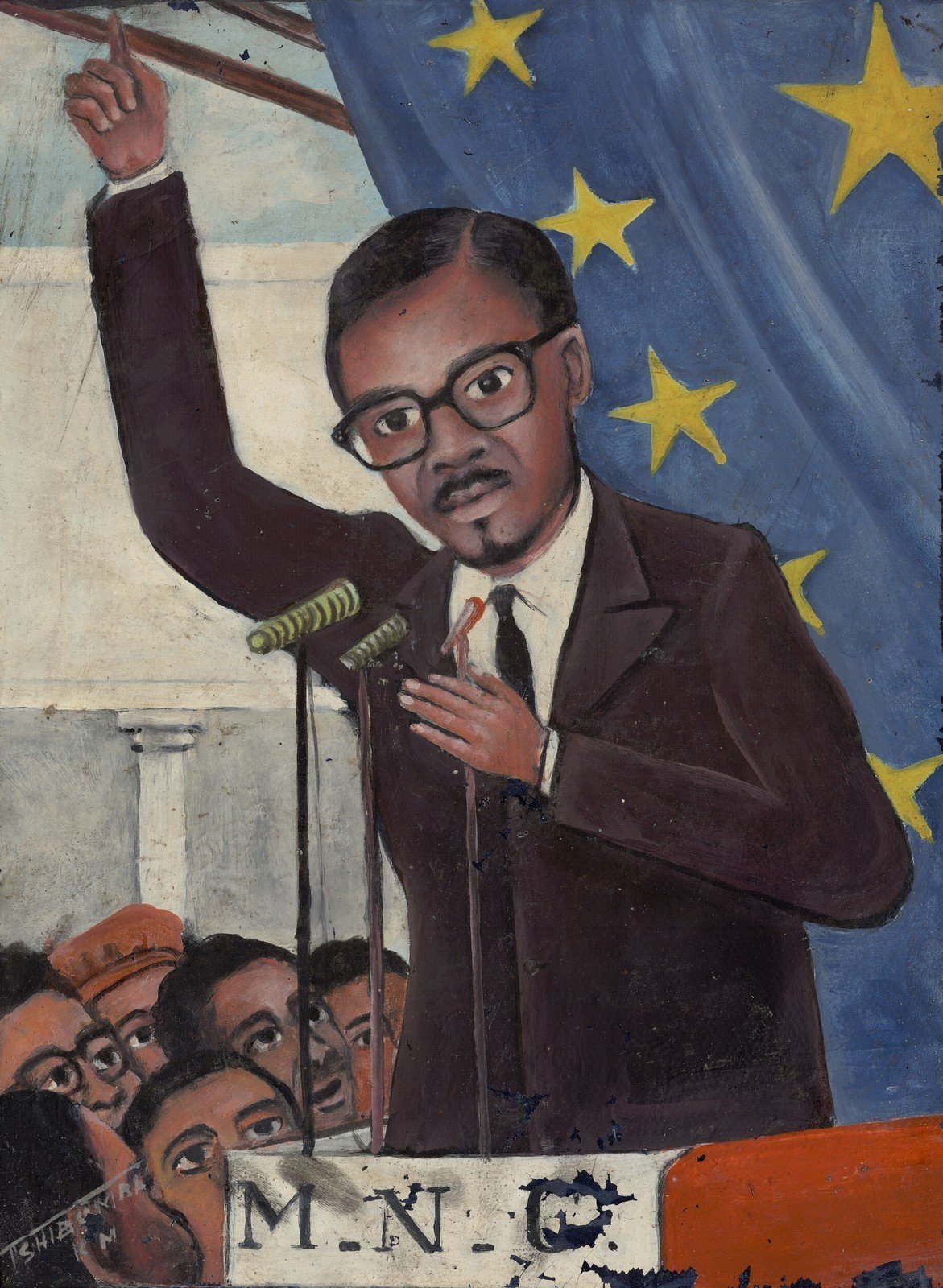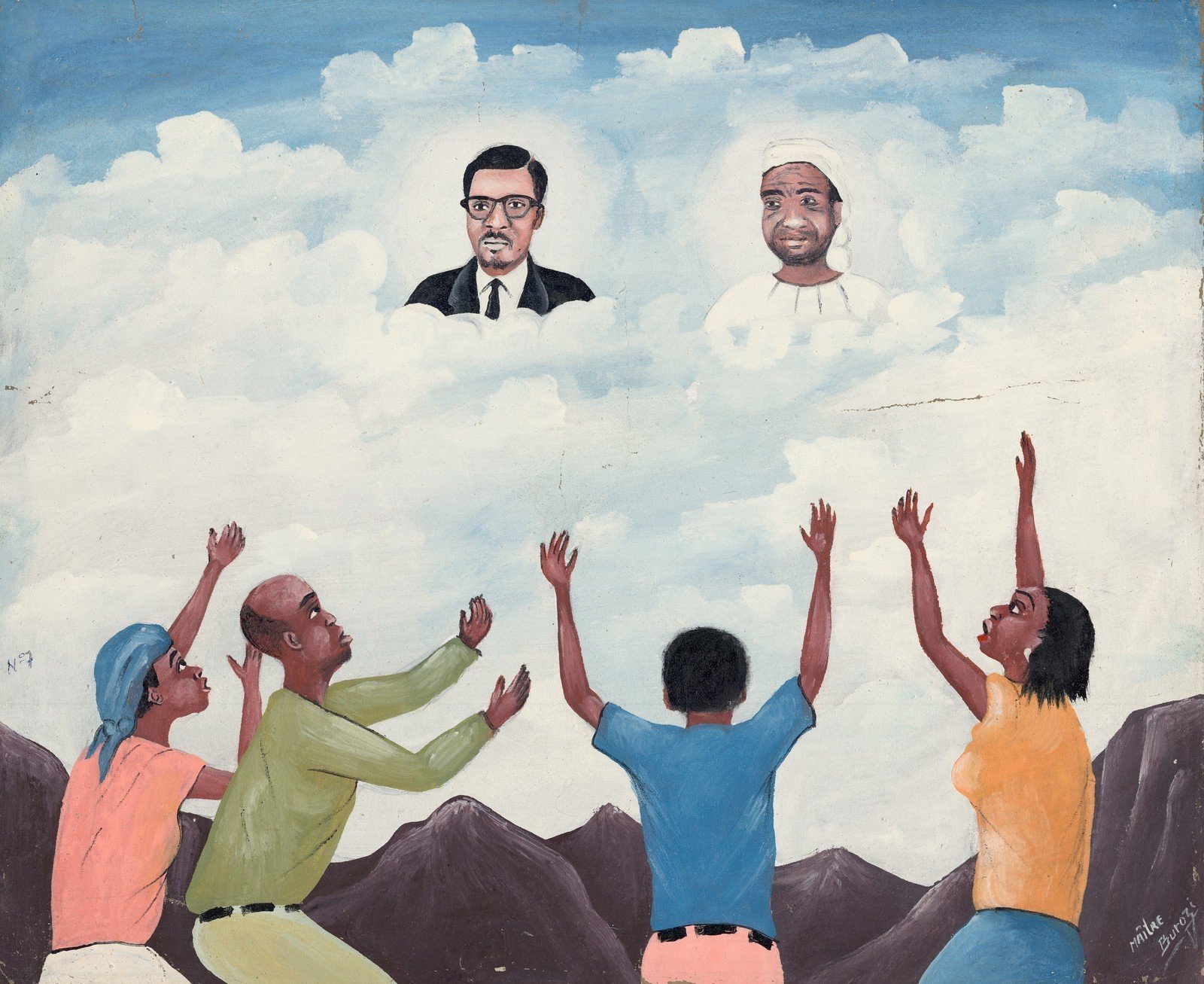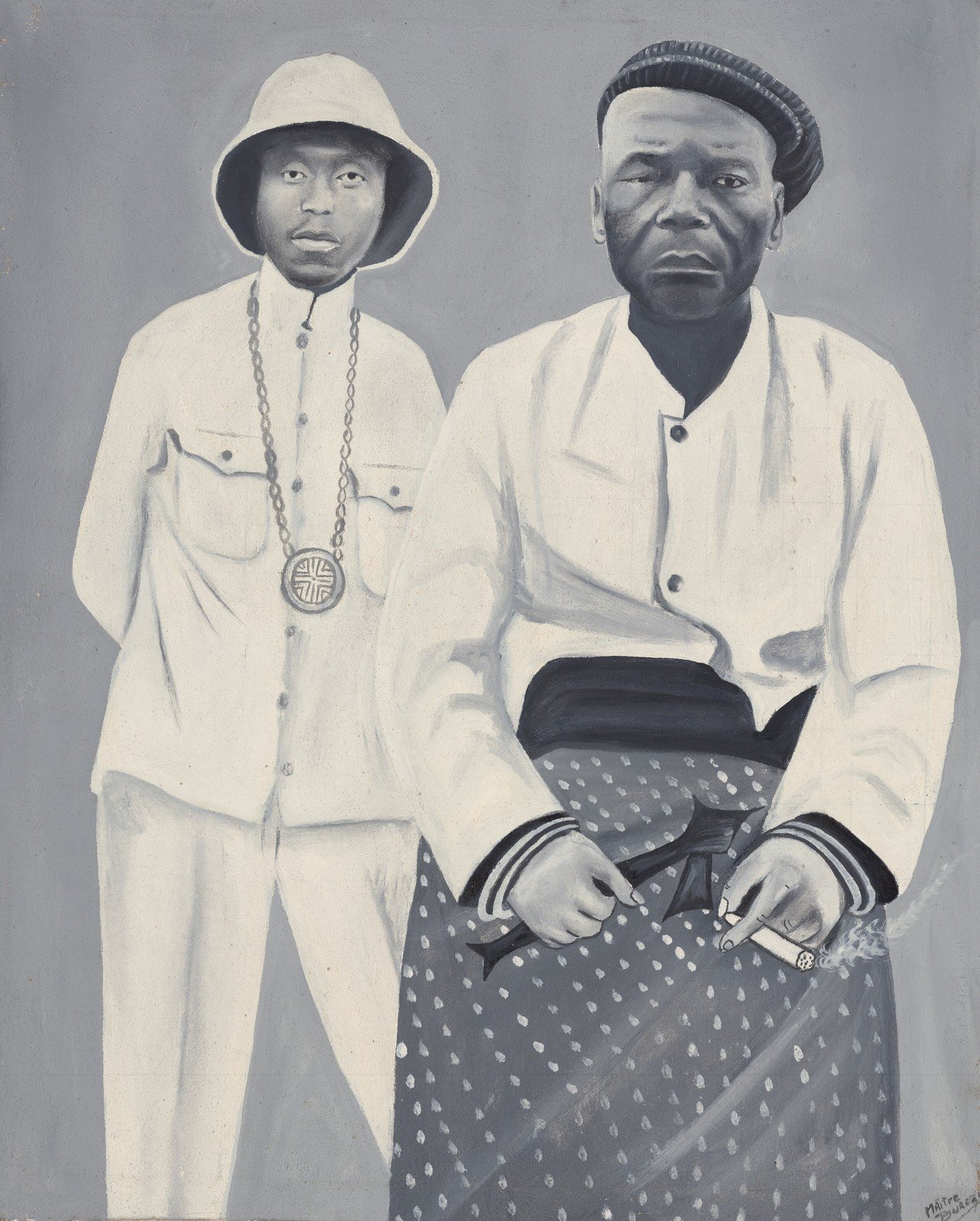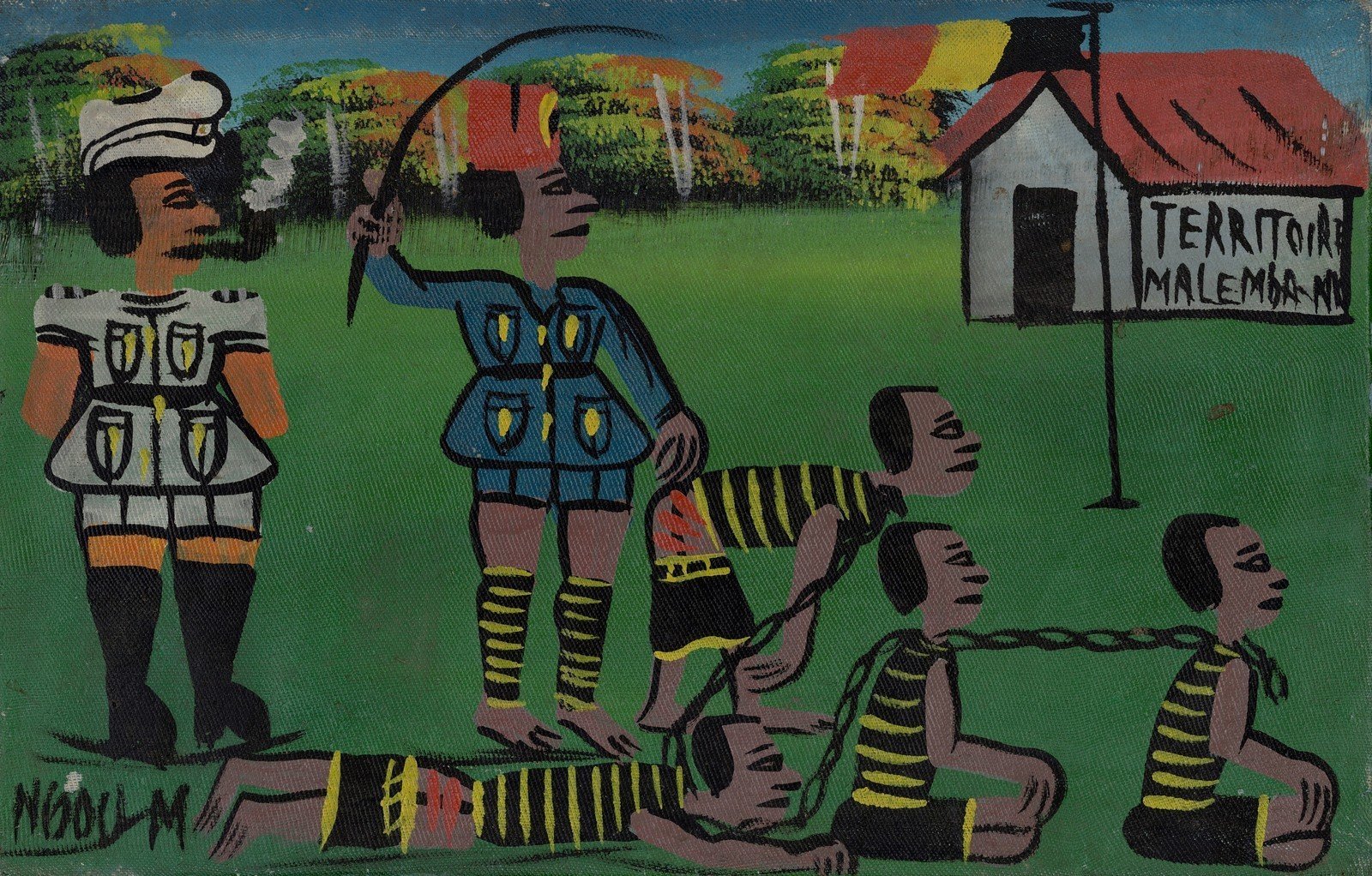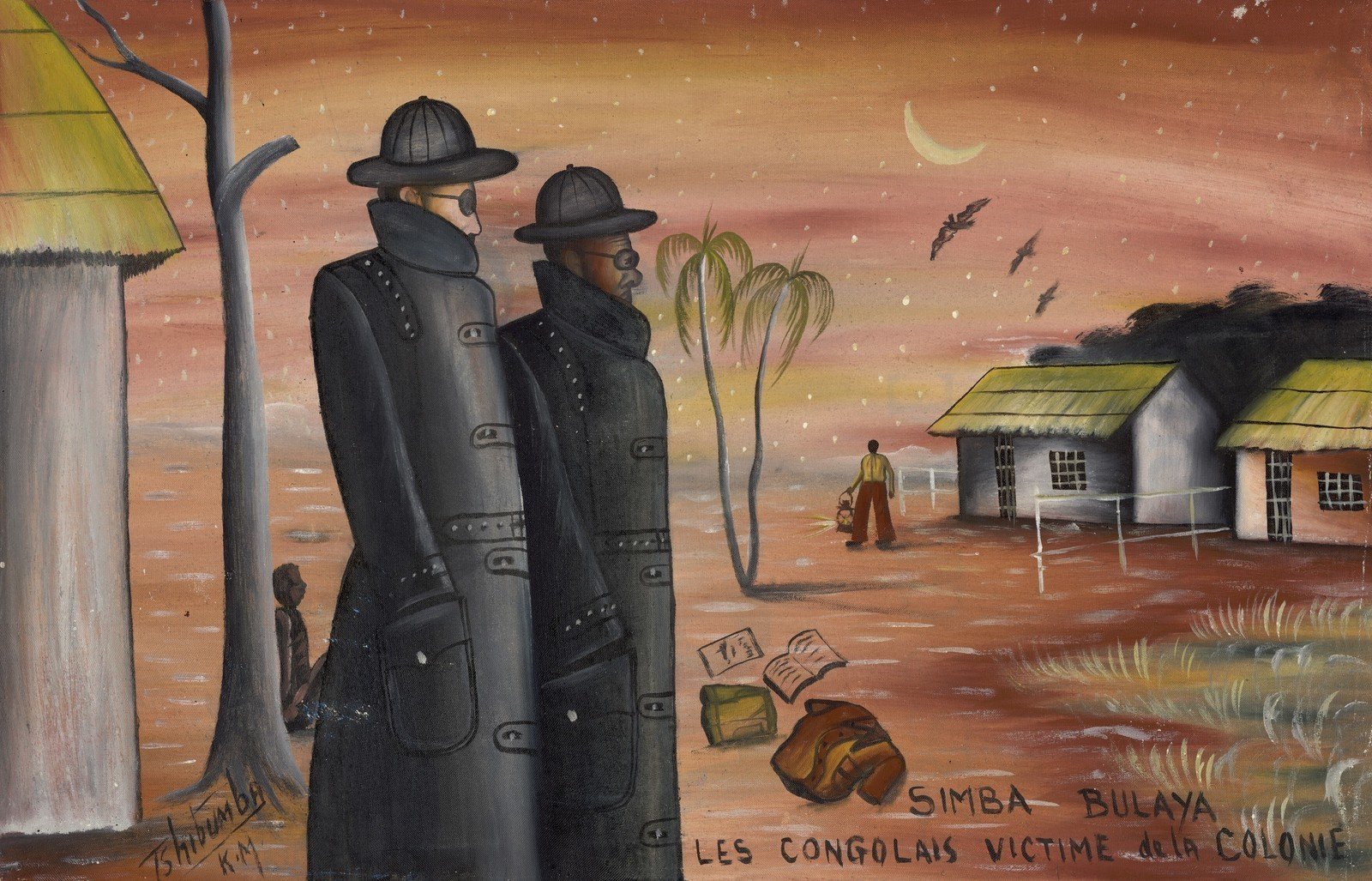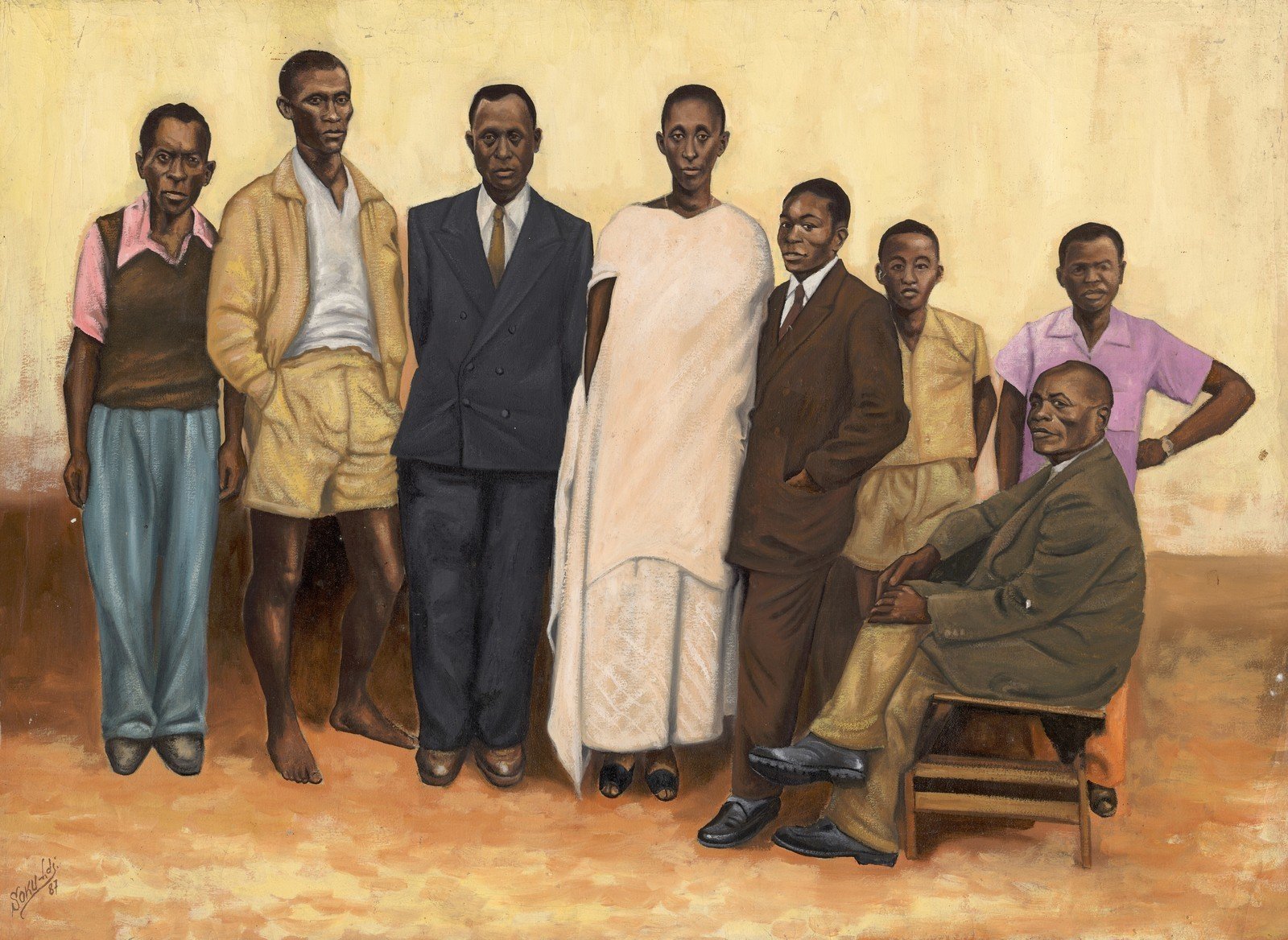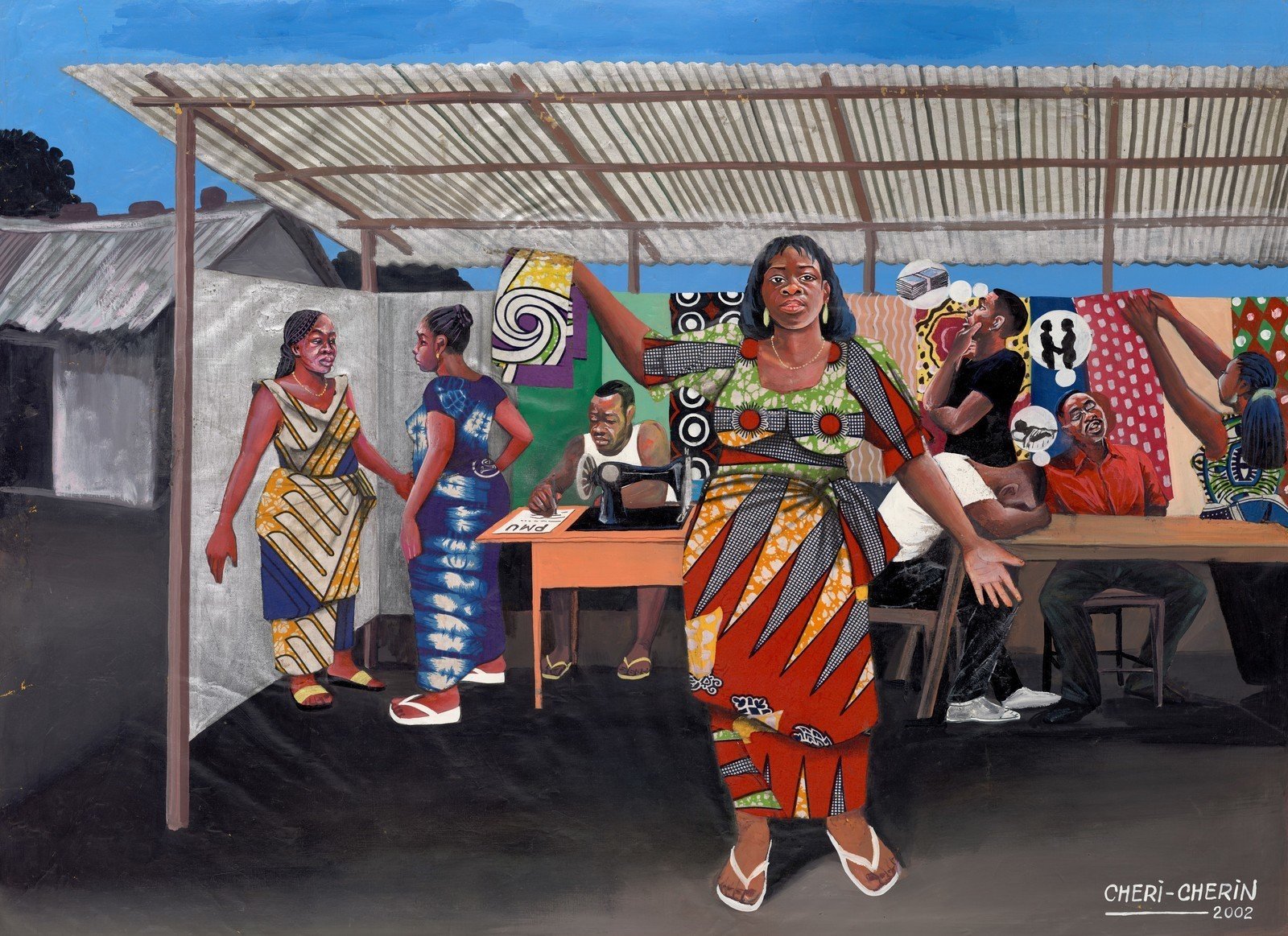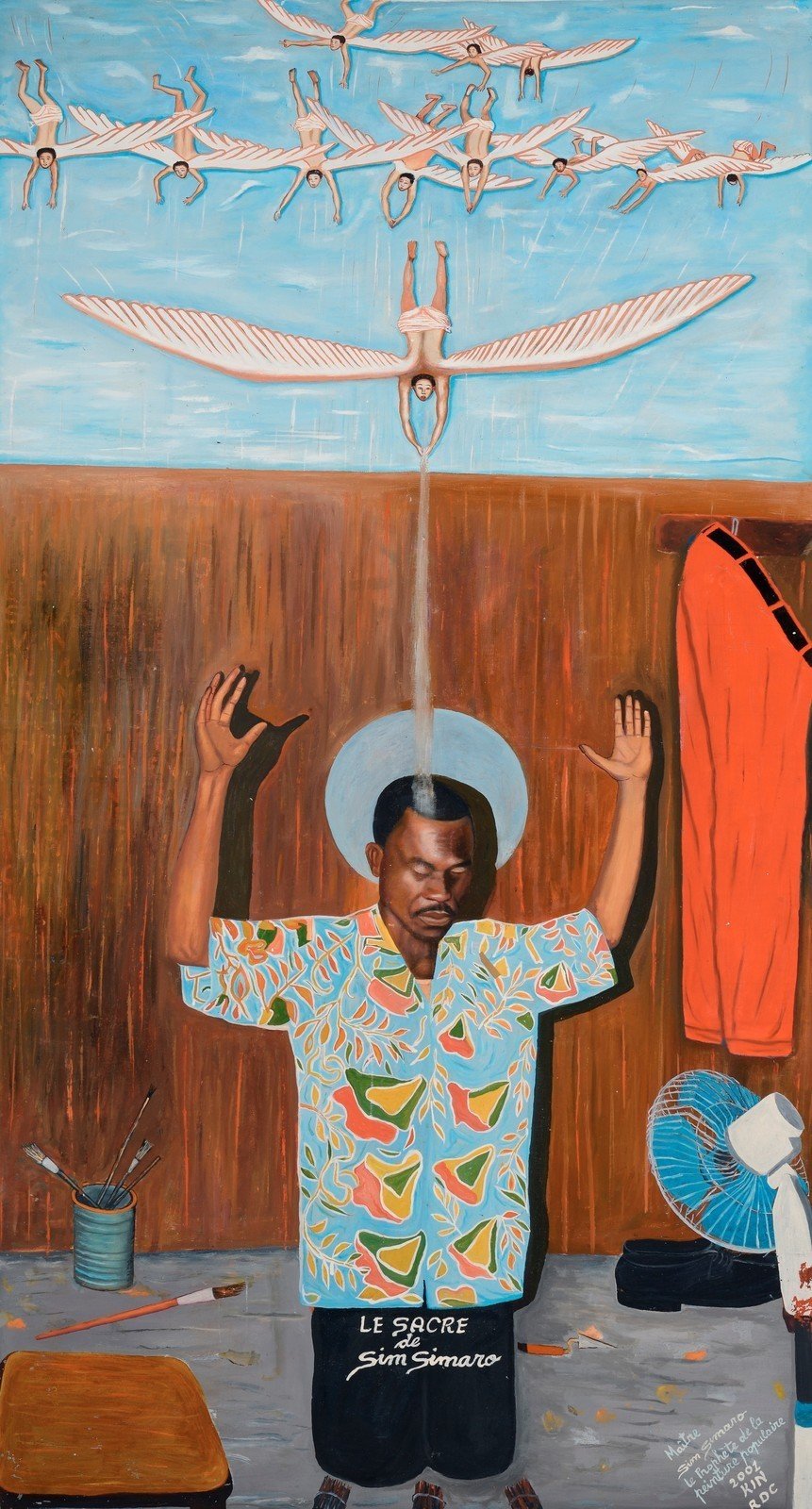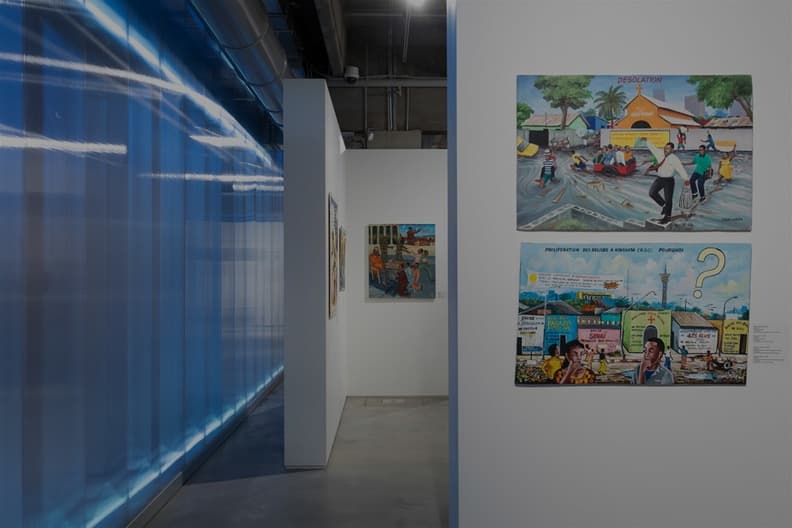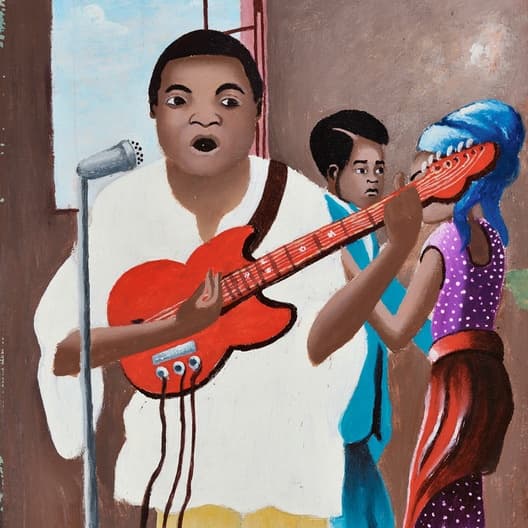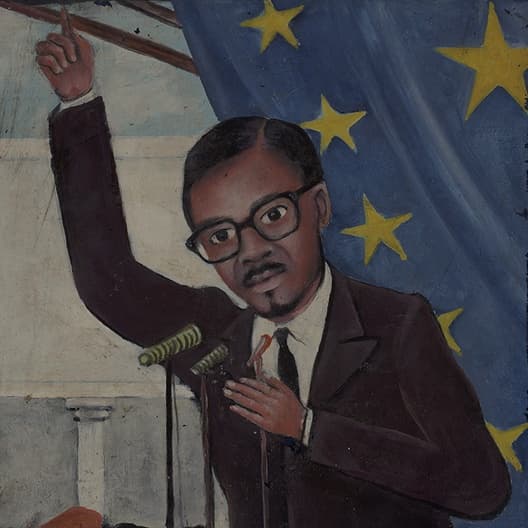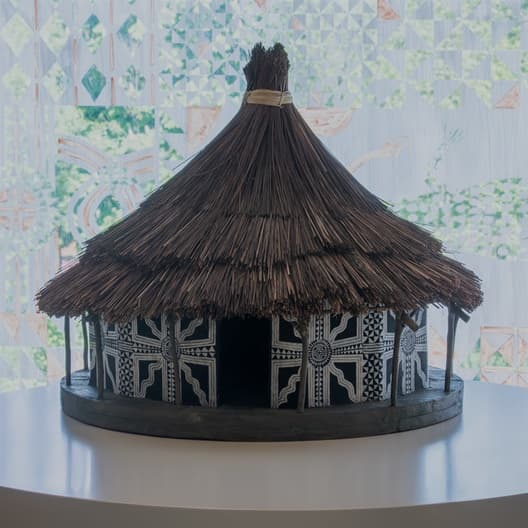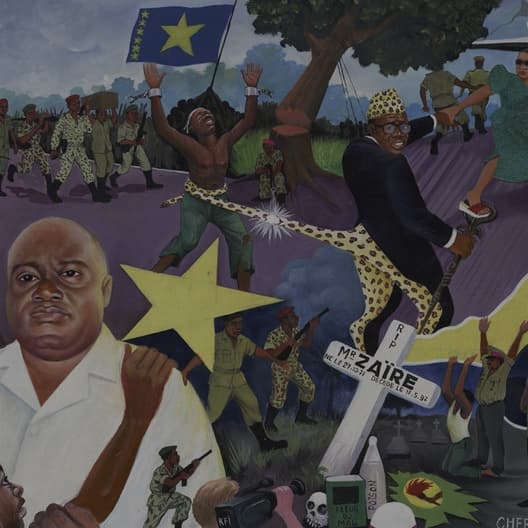Congolese popular paintings over the last fifty years is inseparable from the everyday life of its people: its sophisticated fantastical allegories embed the intertwining phenomena of pop culture, colonial past, local heroes, and a critical view on the country’s political realities.
This public program pays special attention to the social context from where these artworks originate. Sarah Van Beurden, associate professor at Ohio University (USA), will analyze how postcolonial cultural policy developed in Congo during the Mobuto Sese Seco presidency; Ghent University professor Johan Lagae will focus on how both foreign and Congolese architects and planners shaped the architectural image of the Democratic Republic of Congo after the 1960s; while Rob Jacobs, heritage researcher connected to the Visual & Digital Cultures Research Center, Antwerp University, together with filmmaker Anne Reijniers, will introduce the audience to the way artist and activist groups in Brussels and Kinshasa use public space to question official discourses of colonialism.
Bambi Ceuppens, exhibition curator and senior researcher of the Royal Museum for Central Africa (RMCA), Tervuren, will question the idea that Congolese popular painting is a colonial genre by arguing that it forms part of a much longer history of inscribing meaning onto surfaces in the Democratic Republic of Congo, from rocks, sand, material objects, and bodies, to wall paintings.
African studies expert, senior editor at the Russian News Agency TASS, Alexander Panov’s lecture is dedicated to Central African states and the countries the Democratic Republic of Congo has neighboring relations with.
One of the exhibition sections raises questions around the issue of intercommunication between metropolis and periphery, referencing the art of Chukotka which became part of the Soviet Russia in 1920. Mikhail Bronshtein, Chief Researcher of the Department of the Caucasus, Central Asia and Siberia at the State Museum of Oriental Art, will describe how the Chuckchi art of bone-carving has changed over two thousand years, influenced by internal colonization.
Garage Museum Open-Air Cinema will screen the films Statues Also Die (directors Chris Marker, Alain Resnais and Ghislain Cloquet, 1953) and Letter from Siberia (director Chris Marker, 1958). A discussion featuring exhibition curator Valentin Diaconov and film critic Alexey Artamonov will take place after the screenings.
On June 30, marking the celebration of Congo’s independence day, Pier Paolo Pasolini’s documentary Notes Towards an African Orestes (1970) will be shown at Garage Auditorium, followed by a discussion "Politics of colonialism: Russian experience" with students from Moscow universities.
Also on display for the duration of the exhibition are music videos of contemporary Congolese musicians and bands.
Garage Museum of Contemporary Art invites young visitors to engage in crafting traditional masks, making African ornamental drawings, and illustrations of the legends of the Congo river basin—these workshops will be held on Family Days. Joining open classes and exploring the exhibition with a special guide containing tests for kids, allows young audiences to acquire new skills and knowledge.
Garage will offer guided tours for teenagers that will help them to learn more about the history of Central Africa’s colonization, the life of contemporary Congolese artists, and the meaning of African painting’s symbolic and ornamental languages. The participants will also have the chance to practice in the genre of large-scale acrylic painting.
Tactile scale models have been made for blind and partially sighted visitors.
An audio guide accompanying the exhibition is available in Russian and English.

